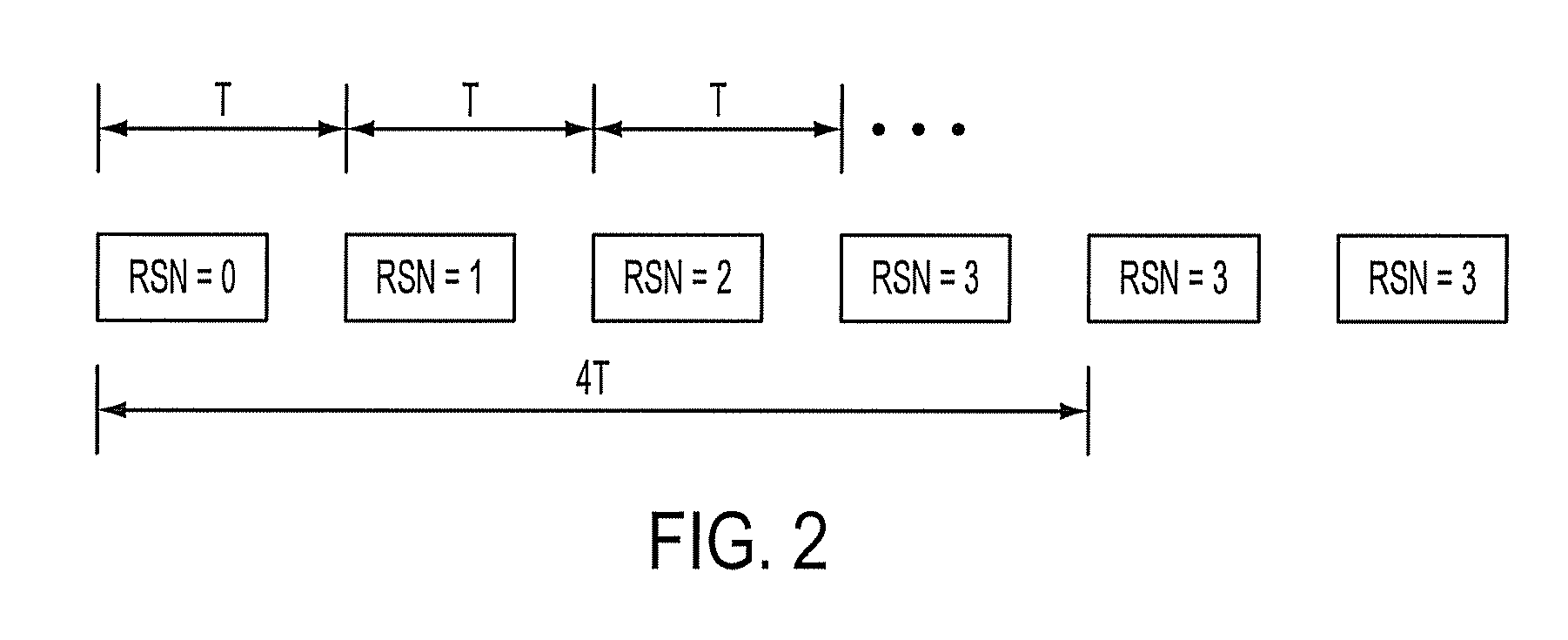Method for combining data packets by a telecommunication device
a technology of telecommunication devices and data packets, applied in data switching networks, multiplex communication, wireless commuication services, etc., can solve the problem of unreasonable specification of explicit rules for rv selection, and achieve the effect of reducing the value range of rsn, not severely harming performance, and reducing the number of bits
- Summary
- Abstract
- Description
- Claims
- Application Information
AI Technical Summary
Benefits of technology
Problems solved by technology
Method used
Image
Examples
Embodiment Construction
[0061]The following text contains some further examples, explanations, embodiments and variants of the method and telecommunication device, as illustrated in FIGS. 1-3 of the drawings.
INTRODUCTION
[0062]In the last meeting substantial progress regarding the HARQ definition for E-DCH was made. An important agreement was to have a synchronous protocol with synchronous retransmissions and to have HARQ with IR and Chase combining.
[0063]Further while operating IR it was agreed that the redundancy versions are taken in a given order and that the first transmission always emphasizes the systematic bits (s=1). For retransmissions in non SHO both emphasizing and non emphasizing of systematic bits should be possible (s=0 or s=1).
[0064]Another agreement for SHO was that the utilization of transmissions always emphasizing the systematic bits (s=1) is generally considered to be beneficial.
[0065]Starting from these facts and the agreement that the RV may be linked to the CFN for some E-TFCs and ex...
PUM
 Login to View More
Login to View More Abstract
Description
Claims
Application Information
 Login to View More
Login to View More - R&D
- Intellectual Property
- Life Sciences
- Materials
- Tech Scout
- Unparalleled Data Quality
- Higher Quality Content
- 60% Fewer Hallucinations
Browse by: Latest US Patents, China's latest patents, Technical Efficacy Thesaurus, Application Domain, Technology Topic, Popular Technical Reports.
© 2025 PatSnap. All rights reserved.Legal|Privacy policy|Modern Slavery Act Transparency Statement|Sitemap|About US| Contact US: help@patsnap.com



